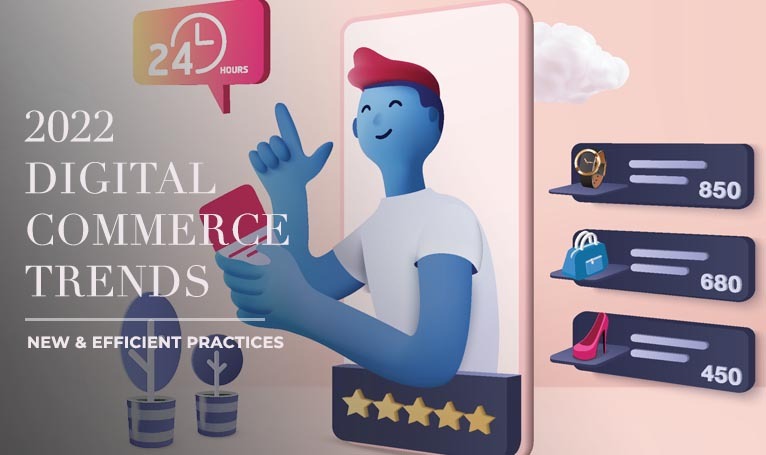
Top 5 Benefits of Headless Commerce for your B2C store
Leading eCommerce players like Adobe, Shopify, & BigCommerce are leveraging the power of headless commerce. As per a success story published by BigCommerce, a brand was able to launch 8 brands and 16 sites all in under 9 months with a headless set up. The client can now create sites 75% faster, publish content at a 90% higher speed and have boosted productivity by 50%.
That’s not all! According to Forbes, over $1.65 billion was raised for headless technologies in 2020–2021 — and as businesses are facing the brunt of a lurking recession, more and more eCommerce brands are racing to keep up with current trends. This number is growing each year, but the real question here is simply one- are you aligned with this growth?
As the world becomes increasingly digitally inclined, businesses are constantly on the lookout for new and innovative ways to improve their online presence and drive customer engagement.
One of the most popular strategies to attain this is by implementing headless commerce. It is a method of separating the front-end customer experience from the back-end functionality. This decoupled approach gives businesses greater flexibility and customization options, allowing them to deliver a more personalized customer experience.

B2B businesses are also largely exploring the benefits of headless commerce for their operations. If you’re interested in learning more about how headless commerce can help your B2B business, be sure to check out our recent blog(backlink here) on the topic. However, it’s not just the B2B businesses that can benefit from headless commerce. In this blog post, we’ll explore the top 5 benefits of headless commerce for B2C businesses, from improved scalability and performance to increased flexibility and customization. By leveraging headless commerce as part of your B2C digital strategy, you can stay ahead of the competition and deliver exceptional customer experiences that drive growth. So, let’s dive in and explore the top 5 benefits of headless commerce for B2C businesses.
1. Unlimited customization:
One of the key benefits of headless commerce is the ability to have unlimited customization, which means that businesses can have complete control over the front-end design and user experience of their storefront. Our client- Crosley Brands is one of the best examples of this. With a large number of SKUs at hand, we were still able to deliver a smooth-working and a visually appealing storefront for them. They have leveraged headless commerce, and customizability has a considerable role in this.
With headless commerce, businesses can create unique and personalized customer experiences that stand out from competitors. Since the front-end and back-end are decoupled, updates and changes can be made to the front end-without affecting the back-end functionality. This helps in providing greater flexibility and agility for businesses and allows for faster experimentation and adaptation to changing customer needs and market trends.

2. Faster experimentations:
Another significant benefit of headless commerce is the ability to experiment and adapt quickly to changing customer needs and market trends. With the separation of the front-end and back-end, businesses can quickly test and iterate new features and functionalities without affecting the core functionality of their eCommerce platform. This allows for faster experimentation and innovation, leading to better customer experiences and increased revenue.
For instance, a B2C business can quickly test and deploy a new marketing campaign or promotional offer without disrupting the core eCommerce functionality. This agility is crucial for businesses looking to stay ahead of the competition and respond to shifting customer expectations.

3. Speed up your integrations with more APIs:
There are three reasons for businesses to speed up integrations with more APIs through a headless commerce structure. First, the decoupled architecture allows for greater flexibility in how data is exchanged between different systems, making it easier to integrate with a wider range of APIs.
Additionally, the modular nature of headless commerce platforms means that businesses can quickly add or remove functionality as needed, without disrupting the rest of the system. Finally, headless commerce platforms typically come with built-in support for a wide range of APIs, making it easy to connect with other systems and services without the need for custom development.

4. Reduce the burden on IT Support:
A headless commerce architecture can reduce the burden on IT support teams by allowing for front-end changes, without affecting the underlying brand integrity business logic. What this means for you is,changes can be made easily, without requiring extensive testing or debugging from your IT team members. Additionally, businesses can take advantage of cloud-based services to handle resource-intensive tasks, freeing up your internal team and reducing the load on experienced IT team members. All in all, allowing them to focus on their workload, not additional workload..
Furthermore, headless commerce architecture offers greater scalability and reliability, without requiring significant investments in hardware or software. This can help reduce the workload on IT teams and allow them to focus on more strategic initiatives and value-add activities. By leveraging the flexibility and scalability of a headless approach, businesses can improve their agility and responsiveness to customer needs, ultimately leading to improved customer experience, satisfaction, and loyalty.

5. Highly Scalable Solution:
Scalability is a critical factor for B2C businesses looking to grow and succeed in the competitive e-commerce landscape. Headless commerce provides a highly scalable solution that can grow with businesses as their needs and requirements change. With headless commerce, businesses can easily add new functionality, features, and integrations without disrupting the core functionality of their platform.
This scalability is particularly important for businesses that experience sudden spikes in traffic or sales volume. Headless commerce provides businesses with the ability to quickly scale up or down as needed, ensuring that their platform can handle the increased demand without any downtime or performance issues.

6. Key takeaways:
Headless commerce is a powerful tool for B2C businesses looking to improve their digital strategy and drive growth. With unlimited customization, faster experimentation, faster integrations, the ability to explore hyperlocal e-commerce, and a highly scalable solution, headless commerce provides businesses with the flexibility and agility they need to stay ahead of the competition and deliver exceptional customer experiences.
If you’re interested in learning more about how headless commerce can help your B2C business, contact us today to schedule a consultation. Our team of experts can help you explore the benefits of headless commerce and develop a custom solution that meets your specific needs and requirements. Don’t wait any longer to start leveraging the power of headless commerce for your business!






